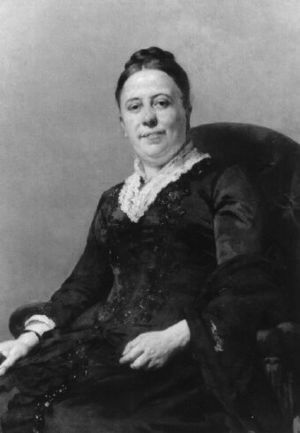Isabelle Gatti de Gamond facts for kids
Isabelle Laure Gatti de Gamond (born July 28, 1839 – died October 11, 1905) was an important Belgian woman. She was known for her work in education, as a feminist (someone who believes in equal rights for women), and as a politician.
Contents
Her Early Life and Education
Isabelle Gatti was born in Paris on July 28, 1839. She was the second of four daughters. Her father, Giovanni Gatti, was an Italian artist. Her mother, Zoé de Gamond, was a writer and a feminist from Brussels.
When Isabelle was five, her family moved to Brussels. They had lost their money after a failed project called a "phalanstère." This was a special community inspired by the ideas of Charles Fourier, who dreamed of a perfect society.
Becoming a Teacher and Learner
Isabelle's mother, who inspected schools for girls, passed away in 1854. Because her family was not wealthy, Isabelle had to find work. She became a governess (a private teacher) for a noble family in Poland.
During this time, Isabelle taught herself many subjects. She became an autodidact, which means she learned on her own. She studied Ancient Greek, Latin, and philosophy.
Fighting for Girls' Education
In 1861, Isabelle returned to Brussels. She continued her education by taking public classes. She already had strong ideas about how girls should be educated.
In 1862, she started a journal called L'Education de la Femme (Women's Education). This journal supported the idea of better schooling for girls.
Founding a New School
In 1864, with help from the city council, Isabelle opened the first organized secondary school for girls. It was called Cours d'Éducation pour jeunes filles.
This school was special because it was completely independent of the Roman Catholic Church. At that time in Belgium, most schools were run by the Church. Isabelle's school offered the very first organized secular education for women in Belgium. "Secular" means it was not connected to any religion.
School Success and Support
The Catholic newspapers did not like Isabelle's work, but her school was very successful. Many talented teachers worked there, including Marie Popelin and Henriette Dachsbeck.
The Mayor of Brussels, Charles Buls, strongly supported Isabelle. He helped create an advanced section in 1891. This section prepared young women for university studies.
Entering Politics
Isabelle retired from her work in education in 1899. She then became active in politics, joining the Belgian Labour Party. She supported the idea of universal adult suffrage, which means everyone, including women, should have the right to vote.
However, the leaders of her party did not fully support women's voting rights. They thought women might vote for the Catholic Party instead.
Her Impact and Legacy
Isabelle Gatti de Gamond was a very important figure in Belgian history. In 2005, Belgian TV stations held polls to find the greatest Belgians. She was voted 55th in the Dutch-language series and 88th in the French-language program.
She is buried in Uccle, a town in Belgium. The street where she lived is now named after her, honoring her contributions.
See also
 In Spanish: Isabelle Gatti de Gamond para niños
In Spanish: Isabelle Gatti de Gamond para niños


